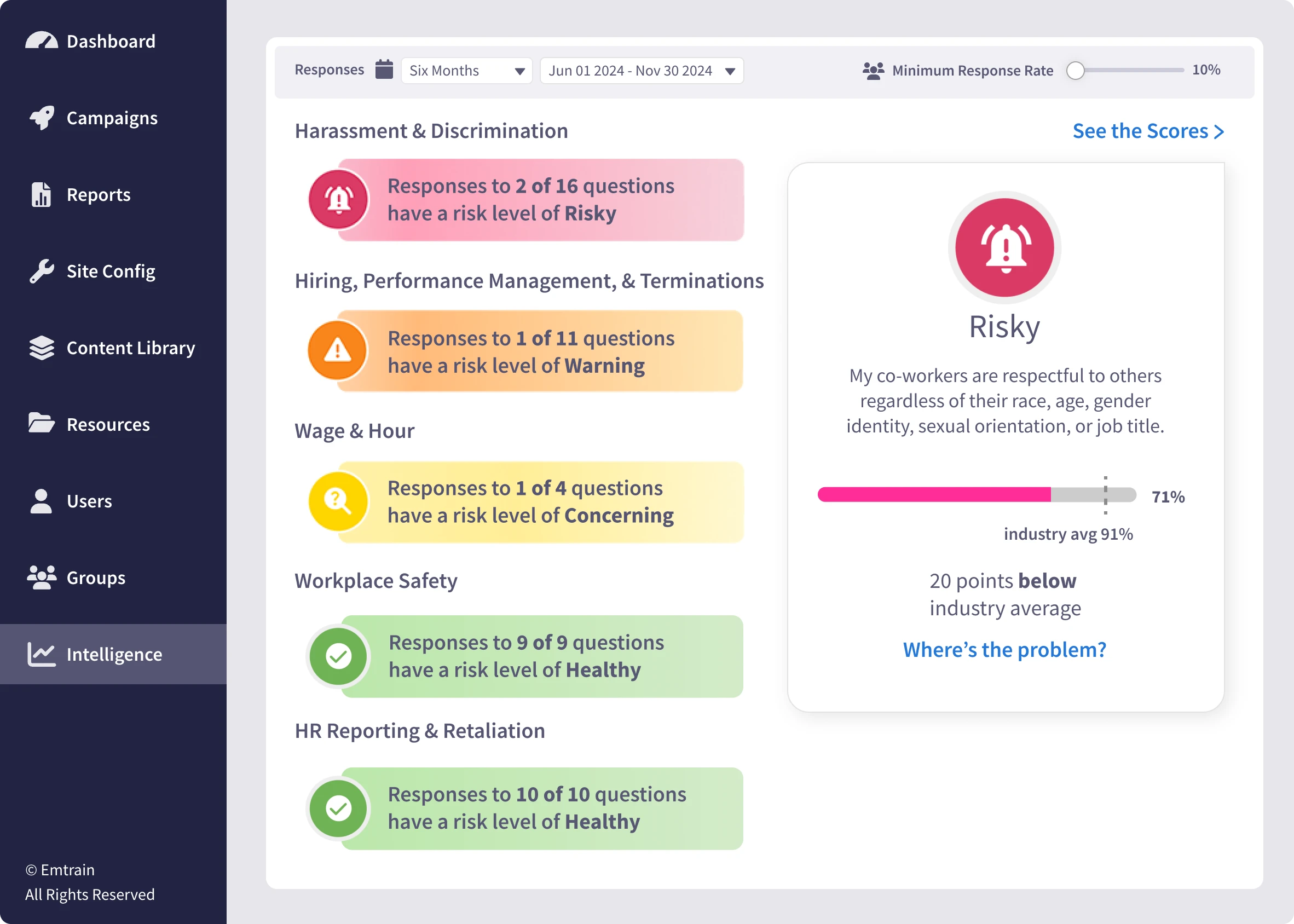Home » Concepts » Ethics & Compliance » Trade Secrets
A trade secret is confidential information that gives a business a competitive edge, because the information is not generally known or readily ascertainable by others, and because the company takes reasonable measures to keep it secret.
Emtrain’s harassment training course is engaging, interactive, and designed to spot and reduce EEO risk.

According to U.S. law (see 18 U.S.C. § 1839 and the Uniform Trade Secrets Act), the protection of trade secrets depends on three key elements:
Trade secret misappropriation in the office refers to any unauthorized acquisition, disclosure, or use of a trade secret without the consent of the owner. This can occur through theft, breach of confidentiality agreements, through an employee moving to a new job, or other improper means. Under laws such as the Defend Trade Secrets Act (DTSA) and various state trade secret laws (often adopting the Uniform Trade Secrets Act), misappropriation can lead to civil or criminal penalties.
Key points in the office context:
Here are concrete examples of how trade secrets might appear in real business settings:
| Type of Information | Example |
|---|---|
| Client / Supplier Lists | A sales rep brings contact lists from previous employer (with confidential contract or pricing information) and uses them in new role. |
| Method or Process | A manufacturing workflow or process that increases efficiency, known internally but not public, used to give the company a cost advantage. |
| Proprietary Software / Algorithms | Internal models, source code, or algorithmic logic used to make decisions (pricing, risk, logistics) which are not disclosed externally. |
| Strategic Planning & Budgeting | Internal forecasts, pricing strategies, upcoming product launch plans which if leaked could harm competitive advantage. |
| Technical Know-How / Design Drawings | R&D blueprints, engineering designs, test data, formulas or specialized techniques used in making a product. |
To protect trade secrets and reduce risk, organizations should adopt a proactive approach. Here are best practices:
Identify & Catalog Sensitive Information
Use Confidentiality Agreements
Limit Access (“Need to Know”)
Employee Training & Awareness
Exit Procedures
Policy & Governance
Security Measures
Legal Remedies & Contracts
In this scenario, a new sales representative joins a company and brings with them a list of clients and contract details from their former employer. A conversation ensues between the sales rep and their manager about how this information might be used to build the new sales pipeline. As the discussion unfolds, both parties face ethical and legal questions about whether using confidential information from the old job is acceptable, whether it qualifies as a trade secret, and what obligations exist under law and organizational policy.